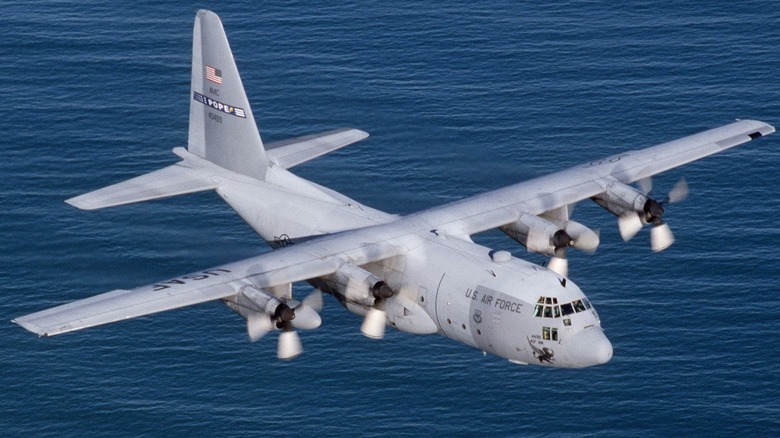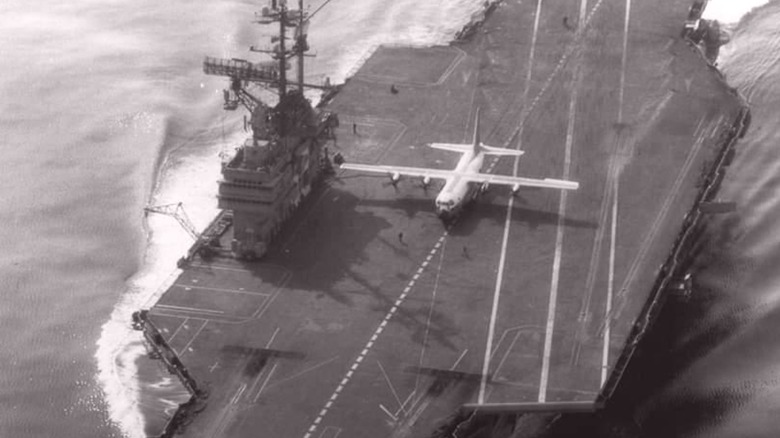This Is The Largest Plane To Ever Land On An Aircraft Carrier (And What It's Used For)
Aircraft carriers have been in use since Britain's HMS Furious sailed in 1917, and over more than a century a wide range of aircraft have taken off and landed on them. While fighter jets make up a large part of carrier operations, they're hardly the only vehicles to call them home. Helicopters, for instance, have their own carriers, which differ from traditional aircraft carriers, though choppers are more than capable of landing on any flat-top. Drones are increasingly a common sight, taking off and landing on carriers as well as being used on newly developed drone carriers, so there's truly a variety of aircraft involved.
The largest plane to ever land on an aircraft carrier was the Lockheed Martin C-130 Hercules transport plane, considerably more massive than even the largest modern fighter jet. C-130s are four-engine turboprop transport planes that have been in operation since 1954, with more than 2,500 produced for the United States and foreign nations in the years since.
The plane that landed and took off from an aircraft carrier was a variant, the KC-130F, operated by the U.S. Marine Corps as an aerial refueling and tactical airlift support aircraft. It typically requires a runway of at least 2,000 feet — the carrier it landed on had a deck just over half as long — and its mass is far greater than the types of planes that usually perform such landings and takeoffs. As of 2025, the C-130 remains the largest, heaviest plane to land on an aircraft carrier.
The C-130 is a massive plane that has landed on an aircraft carrier
C-130s are medium-sized transport aircraft, and the desire to land them on carriers was about resupplying the ships with as much material in as few trips as possible. In October and November 1963, tests were conducted with a KC-130F loaned to the U.S. Naval Test Center. The carrier was the USS Forrestal (CVA-59), and the plane made 21 landings and takeoffs on the ship at a variety of weights. At its maximum, it weighed a total of 121,000 pounds, allowing for 31,000 pounds of payload. For comparison, depending on the model an F-4 weighed around 58,000 pounds fully loaded, making the C-130 more than twice the fighter's weight.
The C-130 wasn't designed to use the steam catapult or the arresting gear systems commonly used by fighters like the deadliest American fighter of the Vietnam War, the F-4 Phantom II, and it didn't use them during the test. On completion of the plane's first landing, a sign on its fuselage read, "LOOK MA, NO HOOK."
The tests proved that the C-130 could be used as a carrier onboard delivery aircraft, but it was never put into service in this capacity. Instead, C130s continued to fly as normal and do so today, but other means are used for deliveries. The aircraft that conducted the tests continued to operate and was ultimately retired, placed on display at the National Naval Aviation Museum at Naval Air Station Pensacola, Florida.

